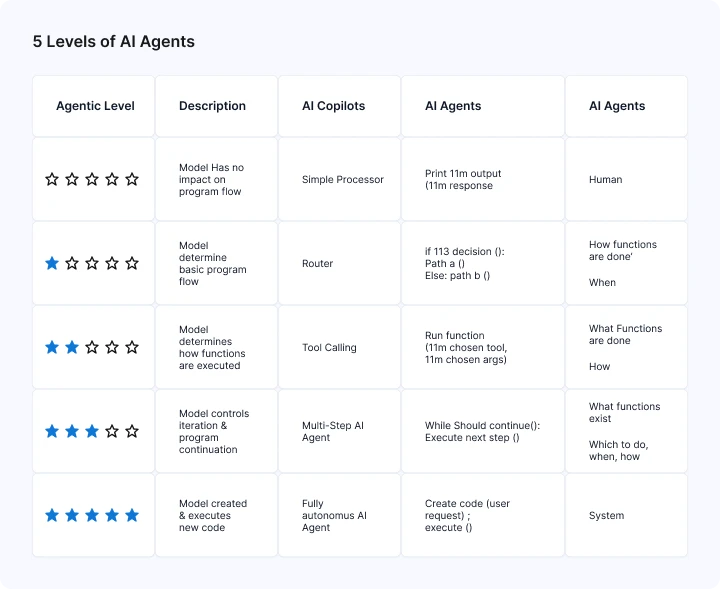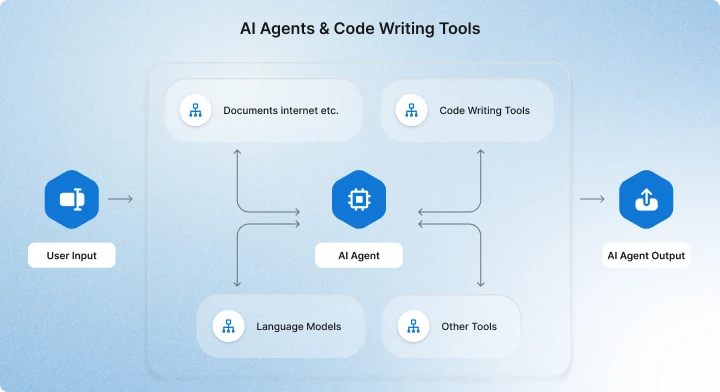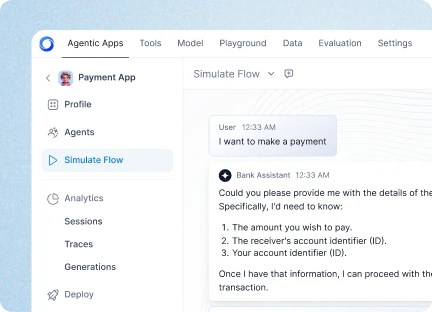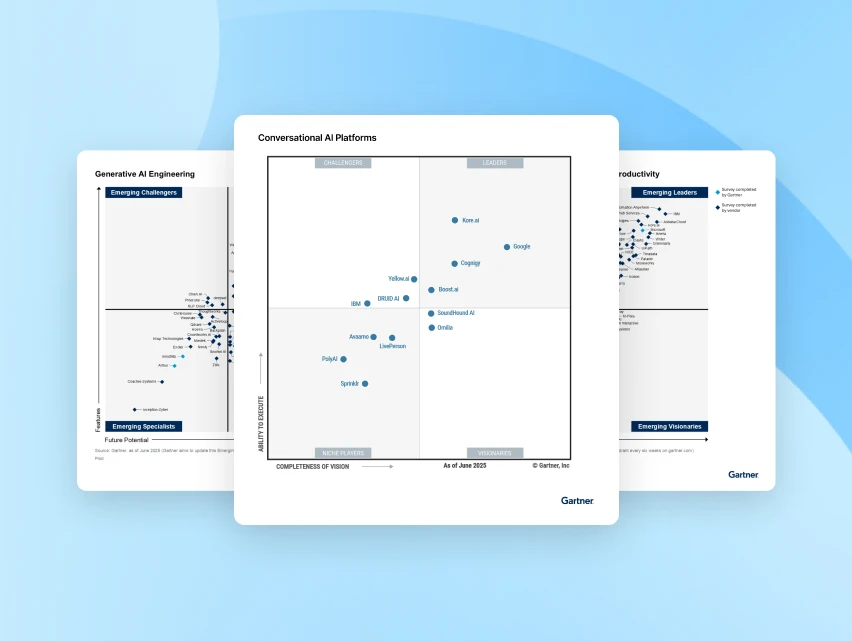AI agents and tools: Empowering intelligent systems for real world impact
Tools can be described as the hands and feet of AI agents, enabling seamless integration with external systems and processes. This includes capabilities such as web browsing, computer interaction, API access, and beyond. AI agents must also intelligently select the right tool for the task at hand, transforming raw intelligence into actionable outcomes.

Cobus Greyling
Nathan Schlaffer
Artificial Intelligence
November 12, 2025
12 Min

The integration of tools into AI agents represents a pivotal evolution in artificial intelligence, transitioning from passive, conversational responders to proactive orchestrators capable of driving tangible, real world change. This shift not only amplifies the utility of AI but also redefines its role in enterprise and societal contexts.
This exploration synthesizes foundational principles with cutting edge advancements, illuminating how tools, from simple API wrappers to sophisticated dynamic code generators, act as the linchpin for achieving true agent autonomy. By bridging the gap between cognitive reasoning and physical execution, these tools unlock unprecedented potential, though they also introduce nuanced considerations around ethics, scalability, and human oversight.
Emerging research underscores the transformative power of enterprise AI tools, which facilitate scalable deployments in business environments. These tools enhance automation while embedding robust security and compliance mechanisms, ensuring AI agents operate within organizational guardrails. Similarly, AI compliance tools play a critical role in monitoring agent behaviors to align with regulatory standards, mitigating risks in high stakes sectors such as finance and healthcare. Yet, ongoing debates highlight the delicate balance between fostering agent autonomy and implementing necessary oversight to prevent unintended consequences.
AI powered productivity tools, meanwhile, supercharge agent efficiency in tasks like data analysis and decision making. However, empirical evidence increasingly points toward hybrid human AI collaborations as the optimal path forward, guarding against over reliance on automation and preserving the irreplaceable value of human intuition.
Introduction
Imagine an AI system that goes beyond traditional chatbot dialogues: one that autonomously navigates the web, authors custom code, or interrogates databases to resolve complex problems without human intervention. This once futuristic concept is now materializing through the strategic integration of tools, external functions and interfaces that endow AI agents with the "hands" to engage meaningfully with the digital and physical worlds.
As large language models (LLMs) evolve into foundational utilities, the focus has pivoted from refining core reasoning abilities to cultivating rich tool ecosystems. These ecosystems directly magnify agent capabilities, enabling them to chain actions described in natural language, such as searching for data and performing intricate calculations, thereby closing the divide between conceptual thought and practical execution.

Specialized tool categories further enhance this paradigm. Enterprise AI tools support secure, large scale integrations, while AI compliance tools ensure adherence to evolving regulations. This article delves into the fundamentals of tool integration, key architectural decisions, persistent challenges, and promising horizons. Drawing on insights from leading frameworks, it offers guidance for builders aiming to craft more resilient and effective agentic AI systems.
Building Blocks of Tool Integration
At its core, tool calling empowers AI agents to dynamically select and invoke functions tailored to specific needs, evolving from static, rigid scripts to fluid, adaptive orchestration. This capability is exemplified in innovations like Anthropic's AI Agent Computer Interface (ACI), where agents leverage tools such as computer for graphical user interface (GUI) interactions (manipulating cursors, clicking elements, or capturing screenshots) and bash for executing shell commands. All of this occurs within a controlled virtual environment that preserves session state, facilitating persistent, multi step workflows without the disruption of constant resets.
Architectural choices are profoundly influenced by task complexity. For atomic operations, simple functions suffice, such as a dedicated math solver. In contrast, multi tool agents excel at chained tasks, like retrieving Steve Jobs' birth year via web search and then computing its square root. Multi agent systems take this further by decomposing workflows into specialized roles, triaging queries, processing data, analyzing insights, and visualizing results, fostering modularity and efficiency.
Tool integration progresses through five distinct levels of agent sophistication, from Level 1's hardcoded rules to Level 5's fully autonomous sequencing of APIs and databases. This maturation curve reflects a journey toward self sufficiency, where agents not only execute but also adapt in real time.

Diverse tool categories allow for precise tailoring to enterprise demands. For example, enterprise AI tools enable secure, scalable deployments; AI tools for hiring automate candidate screening with fairness algorithms; AI agent orchestration tools harmonize multi agent interactions; and AI engineering tools accelerate development pipelines.

In practical applications, agents navigate websites asynchronously, extract elements using CSS selectors, and retrieve live data such as exchange rates, all while maintaining stateful management to ensure continuity.

Challenges
Despite these advancements, tool proliferation poses significant risks, including overload scenarios where a single agent manages dozens of options, leading to degraded performance through suboptimal selections. Studies indicate this can escalate error rates by up to 30% in complex environments, underscoring the need for disciplined design.
Innovative solutions are emerging to address these hurdles. NVIDIA's fine tuned models enhance precise tool routing, while hybrid multi agent architectures distribute tools across specialized agents to promote modularity and reduce cognitive burden. Best practices advocate for affinity based matching (aligning tools with an agent's inherent strengths) and the use of adaptive buffers for superior context retention. Builders should start modestly, prototyping with 3-5 tools in isolated sandboxes, iterating through rigorous testing, and incorporating safeguards like structured outputs to bolster reliability.
For code writing tools, breakthroughs such as xAI's code_execution enable dynamic Python generation for novel queries. However, these require meticulous step by step prompting to minimize hallucinations and navigate token limits. In enterprise settings, integrating AI compliance tools from the outset averts regulatory breaches, and AI powered productivity tools demand thorough audits to safeguard data privacy.

The Future
As tools advance toward self optimization, AI agents are poised to orchestrate multi model ecosystems, seamlessly blending GUI navigation with on the fly code invention to foster genuine human AI collaboration. This trajectory promises democratized access to advanced AI, extending its reach across industries and democratizing innovation.
Yet, this evolution amplifies ethical imperatives, such as rigorous bias checks in tool outputs, especially in sensitive applications like AI tools for hiring, where equity is non-negotiable. With a multi tool LangChain agent, for instance, developers can prototype web query workflows infused with enterprise automation tools and refine them iteratively. We encourage builders to experiment boldly, share insights, and collaborate to propel the field forward collectively. In doing so, we not only enhance AI's capabilities but also ensure it serves as a force for positive, equitable progress.
To realize this potential in your organization, explore the Kore.ai Agent Platform, which excels in tool calling capabilities—enabling LLMs to dynamically invoke external tools like APIs and databases for real-time data access, multi-tool orchestration in parallel or sequence, and extended autonomy across supported models from OpenAI, Anthropic, and Google. Talk to a Kore.ai expert to discuss how these features can streamline your AI deployments and drive transformative results.










.webp)